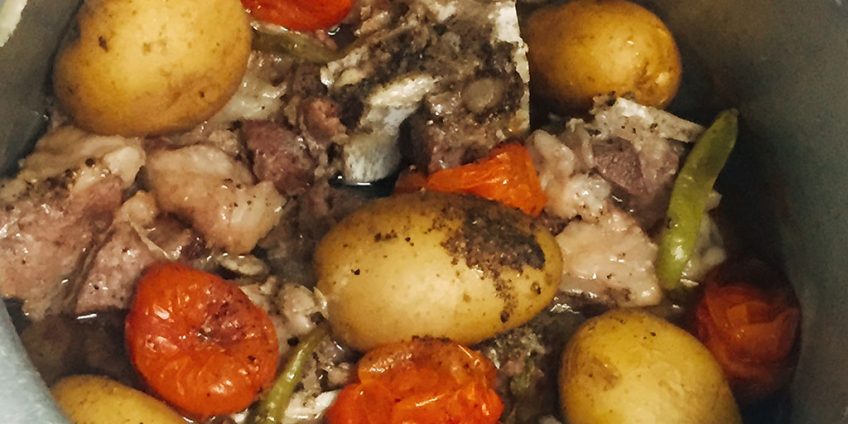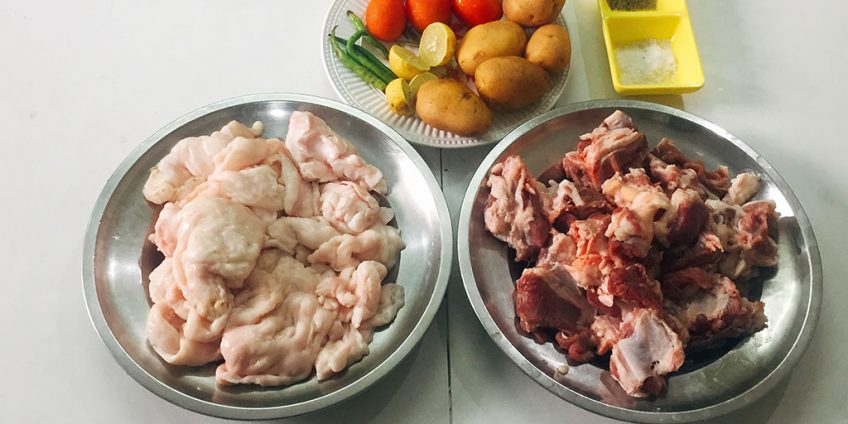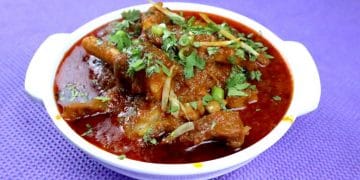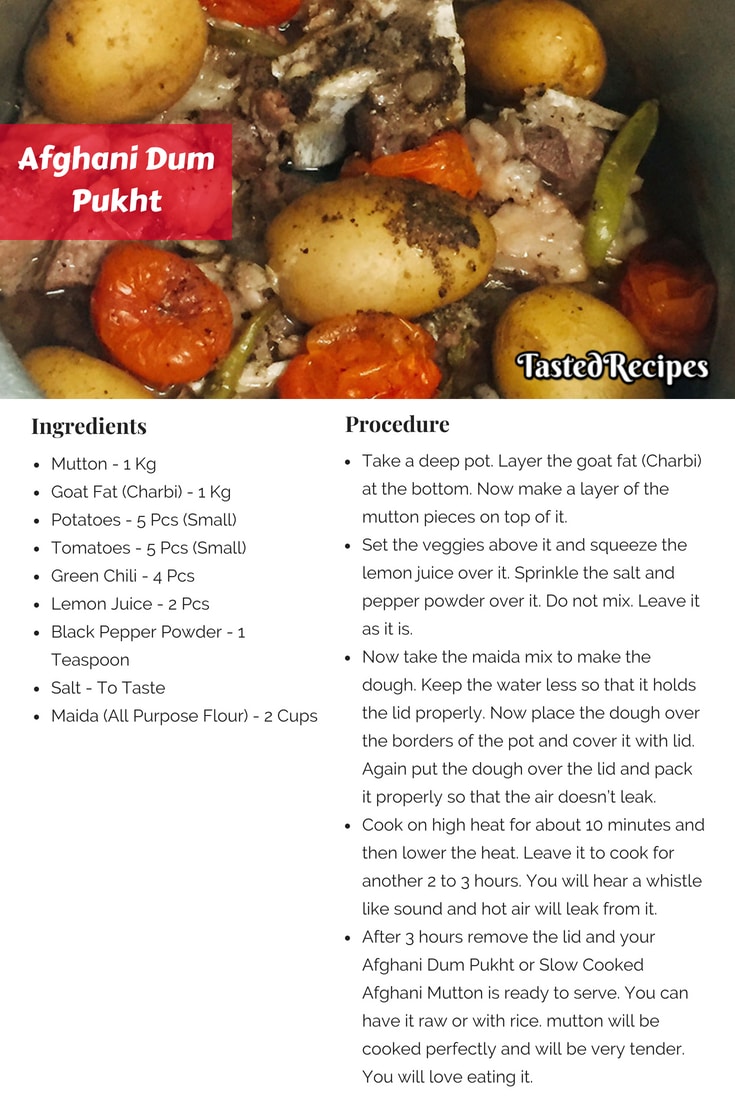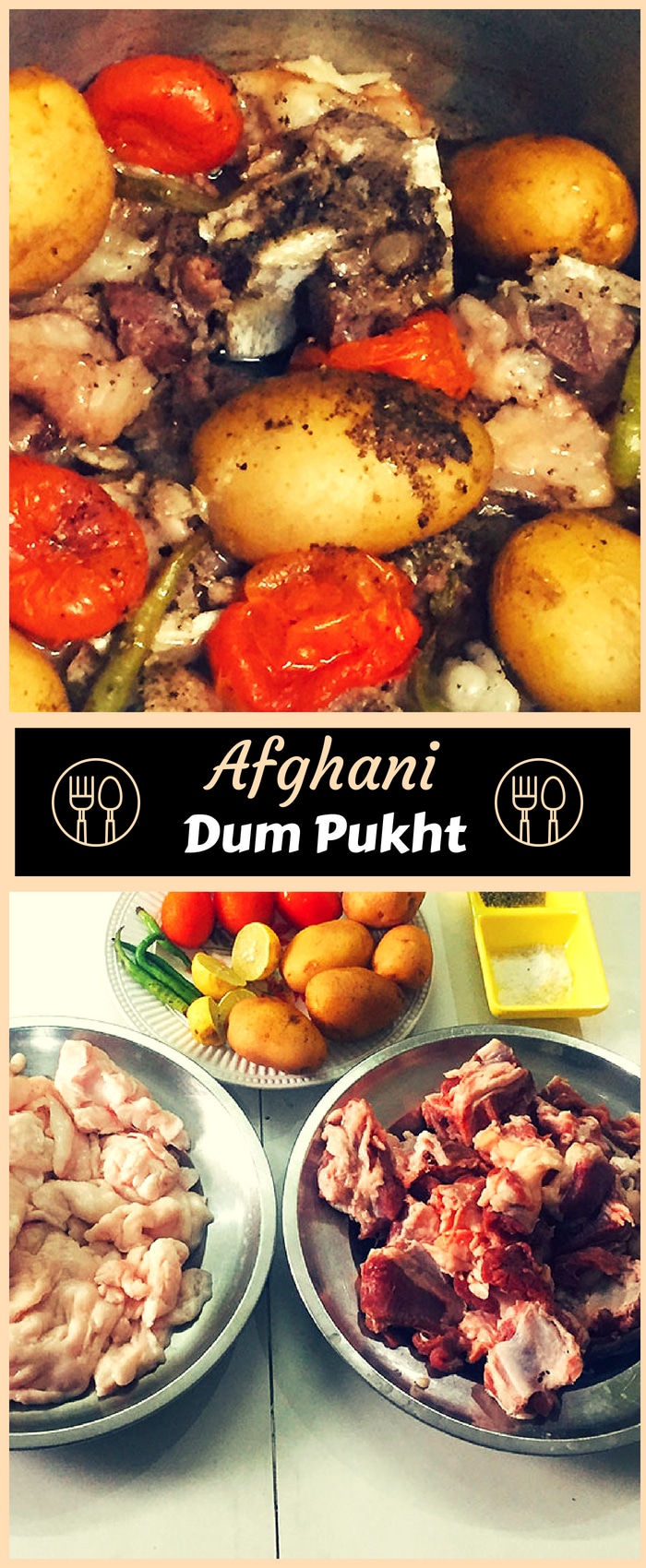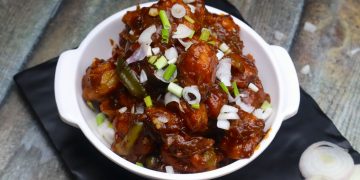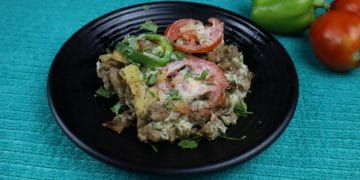Afghani Dum Pukht is a traditional slow-cooked afghani mutton recipe. The beauty of this recipe lies in its simplicity. All you need is a couple of masala powders and a few vegetables. Additionally, there’s no long list of ingredients.
Moreover, the cooking process is also pretty straightforward. Put all the ingredients in a cooking pot and allow it to cook on low heat for 2-3 hours. The reasons why it is called slow-cooked afghani dum pukht.
The recipe name contains two native words, viz dum and pukht. Dum means low heat or low flame, and pukht means to cook. Hence, cooking anything on shallow heat, especially meat, is called dum pukht. Surprisingly, there are regional varieties of dum pukht like Peshawari, Balochi and Afghani. These regions are famous for making their style of dum pukht. We are making the afghani variety today.
Generally, traditional dum pukht is cooked using potato, onion, tomato, garlic, green chillies, etc. However, those who add unnecessary ingredients or cook this recipe differently don’t know what dum pukht is.
For instance, people pour ghee over the final recipe to enrich the flavour. It doesn’t require adding ghee at any point.
How is Afghani Dum Pukht Cooked Traditionally?
First thing first, dum pukht is cooked without cooking oil. Period. Yes, you read that right. There’s no oil in this recipe. If you scroll down and look at the ingredient list, you won’t find oil there. Try it. The question is, if there’s no cooking oil, then how will you cook? Here’s how.
Authentic dum pukht is made using the fat and the meat of either goat or dumba (Arabic bakra). The fat is placed at the bottom of the vessel. Due to this, the fat immediately comes in contact with the heat before other items. As a result, the fat melts and converts into oil which further aids in the cooking process – the reason why there’s no cooking oil in this recipe.
How Long Does it Take to Cook?
Since it is a slow-cooked meat recipe, it will take around 2-3 hours. On the other hand, the meat is un-marinated, and there are no ground spices or strong powdered masala. On top of it, the afghani dum pukht needs to be cooked on low heat. It is because intense heat will burn the meat. In that case, the recipe will require substantial time to prepare.
If you want to serve this dish for lunch, you will have to start early in the morning. On the contrary, you will have to start making it in the evening for dinner. In short, the cooking time will not change no matter when and how you serve it. Remember, if you are cooking this recipe, otherwise, it is not dum pukht.
Why Slow Cooking?
One must cook this recipe on low heat for hours. The traditional cooking method requires cooking this recipe likewise. Since it is a classic regional variety, you need a brick stove for slow cooking. People didn’t have access to gas stoves or induction cooktops in the rural areas. They used (still use) brick stoves to cook.

Place three bricks (or stones) as if they form a triangle. After that, heat larger pieces of coal that can last more than two hours. See that the red hot coal doesn’t catch the flame. Since it is slow cooking, the heat of coal is enough. We don’t need a high flame. After all, slow cooking uniformly integrates flavours into the meat.
Afghani Dum Pukht Extra Shots
- Wash and chop meat into big pieces to maximize the taste.
- Beef and mutton are naturally salty; hence, avoid too much salt.
- Coat the meat using salt instead of sprinkling it on the top.
- Don’t peel off the skin of potatoes. Instead, wash and add them as it is.
- Instead, wash pieces with bones that can tolerate heat, putting them at the bottom.
- Add whole green chillies. Neither chop nor cut them vertically.
Afghani Dum Pukht FAQs
How’s the taste of dum pukht?
The final dish has a mild taste from a variety of ingredients. For instance, the dish has mixed salty, peppery and mildly spicy flavours. But, all in all, everybody can eat it.
Can I cook this recipe on a gas stove?
Yes, you can cook this recipe on a gas stove if you don’t have a brick stove. Keep the flame low. Rest everything is the same.
Why there’s no water in this recipe?
When you coat the meat using salt, it releases water. Further, meat and other items are cooked in the same fat without adding extra water.
Is there any unique pot or vessel needed to cook this recipe?
No, there’s no special requirement for a particular pot or vessel. For example, you can use aluminium or stainless steel pots, but I prefer old-style aluminium vessels.
Even quality non-stick utensils will work, provided they survive heat for long hours. However, they are not recommended.
Can I add masala powders to dum pukht?
You must not add any powdered or flavoured masala powder. It is because traditional dum pukht is not cooked using masala powders. If you do so, it won’t be dum pukht anymore.
Can I make dum pukht in a pressure cooker?
No, do not make it in a pressure cooker. It has to be slow-cooked in a pot on a brick stove or gas stove in the absence of a brick stove. Also, the pressure cooker is not the ideal utensil for this recipe.
How do I know that my dum pukht is cooked?
When it is cooked, you will hear whistles. When you seal the pot using the maida dough, the steam cannot escape. Once the meat is thoroughly cooked, the steam will make its way out, giving sounds like a whistle.
How to serve dum pukht?
Serve it hot and eat it as it is without chapati or rice. However, you can serve it with chapati or rice, but I recommend eating without them. Try it.
I have a collection of mutton recipes for this Eid Ul Adha festival – Cheesy Mince Tortilla Pie, Tawa Kaleji Gurda Masala, and Chinese Mutton Cubes. You can try them as well.
